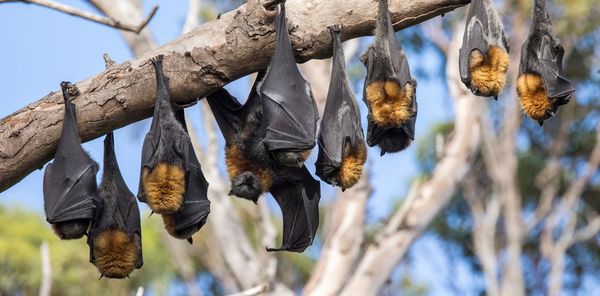
Australian households will spend $1.03bn every year to suppress fire ants and cover related medical and veterinary costs, with about 570,800 people needing medical attention and 30 likely deaths from the invasive pest’s stings, new modelling shows.
The Australia Institute research breaks down the impact of red imported fire ants (Rifa) by electorate, with the seats of Durack and O’Connor in Western Australia, Mayo in South Australia and Blair in Queensland the hardest hit if the ants become endemic.
Drawing on census data and earlier studies about the impact of Rifa, the new figures show that pesticides and pest control pose the highest financial cost to households annually, $581m, followed by medical expenses of $233m and veterinary costs of $215m. A co-author of the report warned the “huge” volume of pesticide needed to fight the ants will affect the environment.
The new modelling doubles an earlier estimate that put total household costs at $536m, and has concerned experts who say individuals may take eradication into their own hands.
In the WA seat of Durack alone, the forecasting shows more than 60,000 people would be stung, 1,209 of whom would develop an anaphylactic reaction. Almost 19,000 dogs and cats would require the attention of a vet after being stung.
In the marginal Queensland electorates of Blair, held by Labor’s Shayne Neumann; Dickson, held by Peter Dutton; and the Greens-held Ryan, the annual costs of Rifa total $21.1m:
Blair: $1.7m in medical costs, $1.5m in vet costs and $5.1m in household pesticide costs.
Dickson: $1.4m in medical costs, $1.2m in vet costs and $4m in household pesticide costs.
Ryan: $1.5m in medical costs, $1.3m in vet costs and $3.4m in household pesticide costs.
The ants would create an additional 2.1m visits to vets nationwide – a figure that comes after the Invasive Species Council warned “a lot” of pets are suspected to have been killed by fire ant stings, including a puppy found dead on a fire ant nest in Greenbank about 15 months ago.
Rifa are managed over an 830,000-hectare zone of south-eastern Queensland by the national fire ant eradication program. It uses a combination of bait and direct nest injection to suppress and eliminate the pest.
Given their rapid spread, Rifa may increasingly be managed by stand-alone households which, according to the forecasting, would each spend $83 on pesticides each year.
The Invasive Species Council’s Reece Pianta said if eradication funding was not ramped up, the modelling suggested Australia could follow in the footsteps of the US.
“Fire ant eradication failure means Australian households could get slugged with a $580m bill each year as they take fire ant control into their own hands.
“In the United States, where fire ants cannot be eradicated, residents in fire ant zones find their neighbours using a range of harsh or off-label chemical treatments to control these killer invaders,” he said.
“Parents are not going to just sit by and let their kids be stung by these tiny killers, so it’s no surprise we hear of stories in the USA of petrol being poured on nests, or uncontrolled chemical use.”
He said the new financial modelling for suppression alone amounted to as much as the current four-year fire ant eradication program budget of $592.8m every year – for ever.
A 2021 government study found that governments and individuals would need to spend $200m to $300m annually over the next 10 years to stamp out Rifa and avoid ongoing annual costs of at least $2bn caused by the pest. The planned funding was only half that amount, the council said.
Research director at the Australian Institute and the report’s co-author, Rod Campbell, said the figures showed the economic case for fire ant eradication was “a no-brainer”.
“Behind the dollar figures though, is what the money would be spent on – pesticides.
“Australia needs to eradicate fire ants urgently not just to save money for households, but to avoid huge volumes of pesticides going into our back yards, fields and bushland.”
Rifa were first detected in Queensland in 2001 and can kill people, native animals and livestock as well as damage infrastructure and ecosystems.










